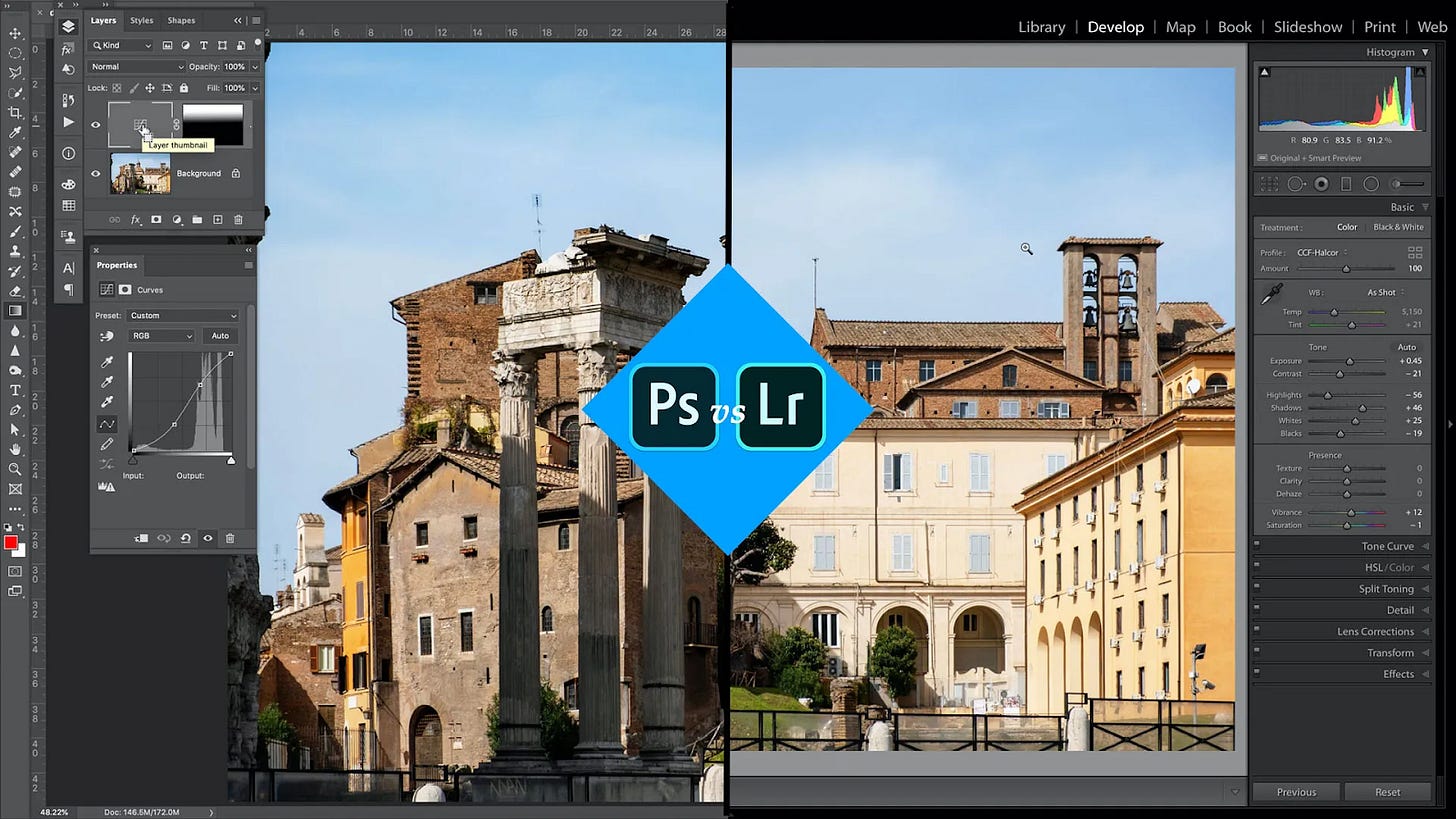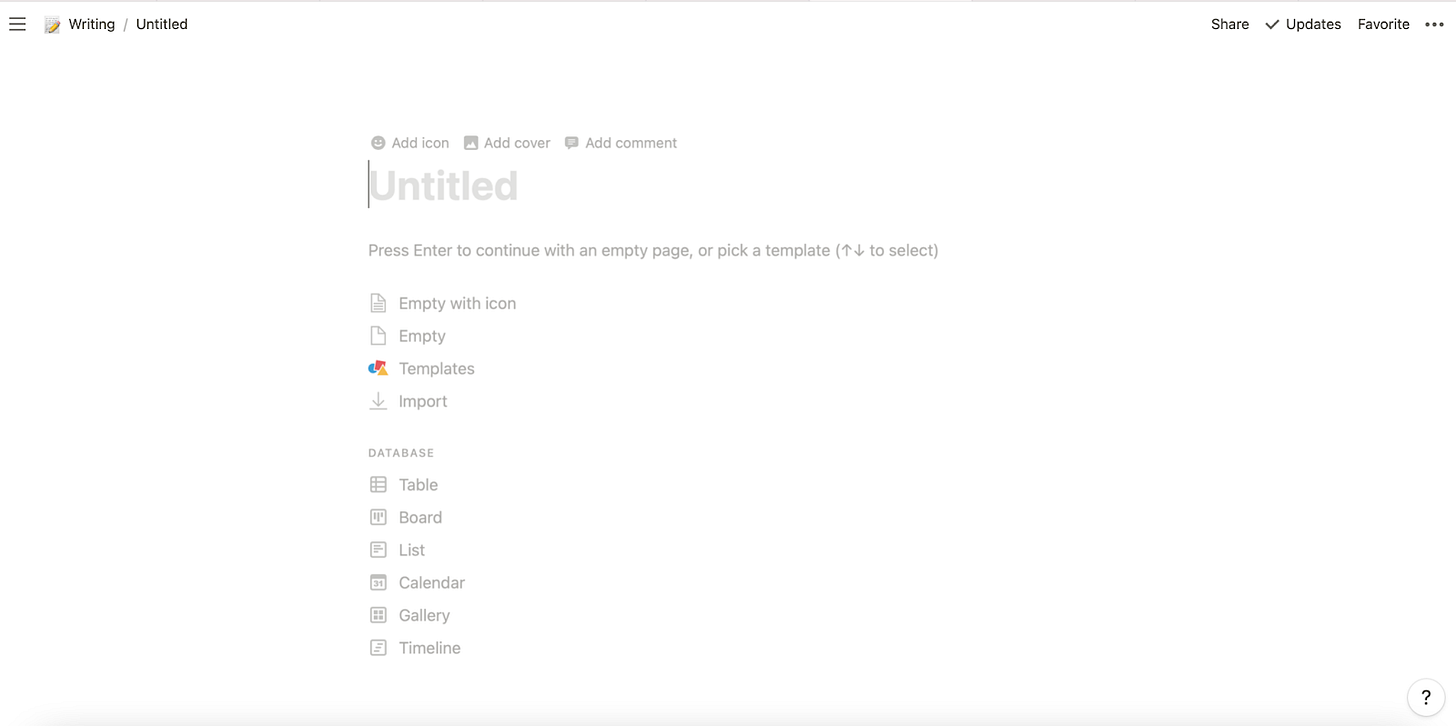Hello all - a hurricane just hit New York so I’m stuck inside today. It’s still beautiful outside, and it’s not too bad to write while listening to the rain.
UX Moats
I took a walk with a friend last weekend and he told me about the new search engine he's building. I was a bit dubious about the idea, but it started to make sense after we went over how he’d be leveraging GPT-3. With Open AI's recent NLP advances, you can effectively train a "better" search engine that can respond to any user query. The way we use search today - type a phrase, don’t see what you’re looking for, adjust a few more times, finally get the article you want - will become archaic sooner than we think.
Since it's too risky for Google & competitors to release GPT-3 powered search anytime soon, my friend's startup can be first to market with their spin on it. Even if their search model is more naive, they can reach some early users who are intrigued enough by the technology to be forgive an unrefined product. This will give them enough time to train a better model and build some moats before the big players move their GPT-3 out of the labs.
I can see a world where my friend builds a formidable moat with three distinct components.
[Component 1: Start by being 10x better than others] They'll attract a dedicated early user base because of the perceived simplicity and sexiness of using a GPT-3 powered search engine. "Search and get results immediately" is a user experience that's 10x better than existing options.
[Component 2: Deepen features] To further lock users in, search engine 2.0 would deepen its features to rapidly increase user utility. I imagine there could be a way to let users signal which results they liked best and/or things they don't want to see again. Similar to swiping on Tinder or TikTok, though with a very very different UX; users would get into the habit of training the search engine. This would build a positive cycle from which users realize they're getting increasingly accurate, personalized search results the more they use it. Perhaps there could even be space for a “For You Page” style feature, making search engine 2.0 a place not just for intent-based search, but for discovery.
[Component 3: Visual brand] As a final phase in deepening user attachment, the search engine startup may develop a distinct visual identity, keyboard shortcuts, and other patterns that make it psychologically difficult for the user to move to a different platform. User loyalty, via brand identity, is very much a thing in software - just look at peoples’ reactions if you try to get them to switch back to Windows from macOS.
Those 3 components are the building blocks of the UX moat. Component 1 is an important foundation of the moat, and Component 3 is really just a cherry on top. But all three are needed to form a true UX moat. Here’s a Milk Bar cake to show you what I mean...
According to this CB Insights piece, there are 25 types of moats. The UX moat isn't one of them, but I view it as a superset of the switching cost moat. Strictly defined, a switching cost moat is the one-time inconvenience or expense incurred when a customer switches products. UX moats are a more intense version of this - consumers of products with true UX moats will experience extended discomfort from switching products, and might even find new user interfaces distasteful.
Now, for some real world examples of the 3 components.
Component 1: “Better” UX
The foundation of a UX moat comes from selling users the idea that your platform will drastically reduce the time or friction of one of their existing experiences. I find that most of the time, this means redesigning an existing software interface for a more persona- or use case-specific solution.
Focus on a user persona
Jira is the classic example of feature bloat - the tool is powerful if you know how to use it, but a monster to approach if not. Linear focused on making a superior experience for engineering teams, and executed a subset of Jira’s features extremely well - task queue, sprint planning, roadmap, & seamless Github integration. They’re killing it and I’m sure their future roadmap will enable them to become the tool of choice for any functional team - but their focus on a specific persona is the key to stealing large segments of users from Jira.
Alternatively, a focus on user persona could also mean designing for a specific level of technical expertise. No code tools are a great example of “better UX” for less technical folks. Another area where this applies is 3D design tools. They’re notoriously complex - just take a look at Maya.
But a recent entrant, Spline, cut down the scope of its tool while making it possible for novice designers to create full-fledged 3D experiences.
Focus on an industry
Gorgias is support desk software, like Zendesk, but verticalized for ecommerce. By focusing on designing for ecommerce use cases - ie processing returns, looking at order, shipping, discount history, etc - Gorgias provides a UX that’s much more streamlined for support professionals at ecommerce brands. For them, there’s no reason to use Zendesk if Gorgias exists.
Users who discover tools that have a strictly “better” UX than what they’re used to end up developing a higher standard for what their tools should look like and what they should enable them to do. Once users feel this way, it becomes difficult to get them to move off of their tool of choice.
Component 2: UX Depth
Once they’re in, you want to pull users in even deeper with powerful but increasingly hard-to-use / nested features.
Airtable now has automations and apps that extend the functionality of existing bases. Users who learn to set up workflows are basically too knee-deep to leave Airtable.
Adobe’s Creative Cloud suite goes deep with its functionality. Users who get comfortable will quickly find that features and subsections can be expanded to access more granular controls - products that feel like rabbit holes have successfully incorporated Component 2.
Bloomberg is by far the best example of Component 2. Most of its users have memorized hundreds of shortcuts. Unseating Terminal would require uprooting the industry.
Component 3: UI & Brand
If a product has set good foundations with Components 1 and 2, the last piece in solidifying their moat is building a distinct UI identity. This is ultimately how products build such huge fanbases that are unwilling to switch to different tools.
Notion got rid of the top nav bar concept and has a unique blank page setup screen. Their UX is well-loved and recognizable. There’s obviously an ongoing battle with Roam Research and others, but most of Notion’s devoted user base is staying put.
Empty Notion vs empty Google Doc:
Other apps, like Discord, have captured a user persona (gamers) that helped define its distinct visual and audio identity. Now its interface has become popular outside of the gaming community as well.
Conclusion
UX moats need to be continually fortified. They can become a double-edged sword if your competitors recognize what you’re doing, usually when you’re in that “building best-in-class UX” phase, aka Component 1. Prime example: Figma using Sketch's interface to capture Sketch users en masse.
The solution to this though, is to keep innovating before your UX becomes commoditized, and deepening your product until it's so big and complex that your competitors can't copy it unless they devote years agonizing over the little details. If you can get past Component 2 and successfully execute Component 3, you’ll build up a fanbase that won’t leave your tool even if another one copied your UX exactly.
UX moats are a form of customer and brand loyalty that plenty of startups should be tapping into.
Weekly Photo
I’ve been trying to get better at photography, so I thought it'd be fun to include a photo at the end of every blog I write. I took this one last Sunday, right outside my favorite store/museum (Dover Street Market) in New York.














Hi Sara, regarding your pondering about UX Moats for infra, Layer5 has built MeshMap, which delivers a Figma-like experience for DevOps engineers. Its UX might intrigue. Moreover, I'd be interested in any thoughts that pop into your mind about it - https://layer5.io/meshmap.
Hey Sara, awesome post, I loved the MAYA 3D tool. Wow looks super cool. When you have time do check https://Web3Domains.substack.com if you see any Web3 domains we should develop I am open to a new project / JV. Add me on Twitter @SebastienStaub aka Mr Silicon.Valley :O) Well got the best Web3 domain(s) now let's go after the team and talents, present to VCs / OPM and let's make it rain for all.